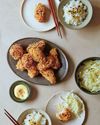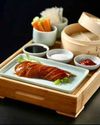Home to over 7,000 tropical islands, the Philippines is an exciting region of culinary diversity. With Filipino cuisine on the rise as a trend, it’s the place to explore this year.

Surrounded by the tropical Pacific, the Philippine islands form part of the Malay archipelago stepping stones from Southeast Asia to Australia. The bulk of residents – around 104 million people – inhabit just 11 out of 7,000-plus islands. Increasingly, its buzzing urban areas are attracting gastronomic pilgrimage, and the varied eating places in Manila celebrate the 19 regions you’d be hard-pressed to taste in just one trip.
Often referred to as the original fusion cuisine, Filipino food and drink embraces its cultural heritage as warmly as Filipinos welcome new friends. The vestiges of the Spanish Empire (including Mexico and Portugal) exhibit strong influence on native Austronesian dishes, with Chinese, Japanese, American and French culinary presences felt, too. This translates to reassuringly familiar dishes, like slow-cooked stews and Asian favourites, with flavours and textures from the local produce.
Hosts often ask, ‘Ano yung lasa?’ (‘Does it taste good?’ in Tagalog.) ‘Lasa’ means taste, but also conveys the concept of flavours in balance – umami, bitter, salty, sour, sweet, hot. So, the question more accurately means, ‘Does it taste good to you?’ Filipinos take no offence if you add salt or spice, knowing that balance is specific to individuals. Consequently, condiments and dipping sauces are myriad to suit your personal preferences.
Bu hikaye BBC Good Food ME dergisinin April 2019 sayısından alınmıştır.
Start your 7-day Magzter GOLD free trial to access thousands of curated premium stories, and 9,000+ magazines and newspapers.
Already a subscriber ? Giriş Yap
Bu hikaye BBC Good Food ME dergisinin April 2019 sayısından alınmıştır.
Start your 7-day Magzter GOLD free trial to access thousands of curated premium stories, and 9,000+ magazines and newspapers.
Already a subscriber? Giriş Yap

Kung Pao & Beyond by Susan Jung
Editor Keith Kendrick indulges his love of fried chicken with this celebration of the whole bird

Tried & tasted
Our top dining experiences this month

Make the most of your gadgets
Embrace energy-efficient cooking with these money-saving

CHOCOLATE PIZZA
Make this a fun baking project with the kids

5 healthy ideas yogurt
Boost your gut health with our simple snacks, breakfasts and lunches

a touch of spice
Make a change from rice with quick-cooking bulgur wheat and chickpeas – the result is a gently spiced vegetarian supper, full of flavour and textures

THE SUITE LIFE
Pack your bags and head to Qatar for a luxurious weekend escapade at Waldorf Astoria Lusail Doha

MELISSA THOMPSON'S FIRE FEAST
Welcome warmer days with this fresh menu for the barbecue

PULLED BEEF
Tom's one-pan beef recipe is a simple way to master slow-cooking meat

free-from & fabulous
Quick, everyday recipes that omit dairy, eggs and nuts